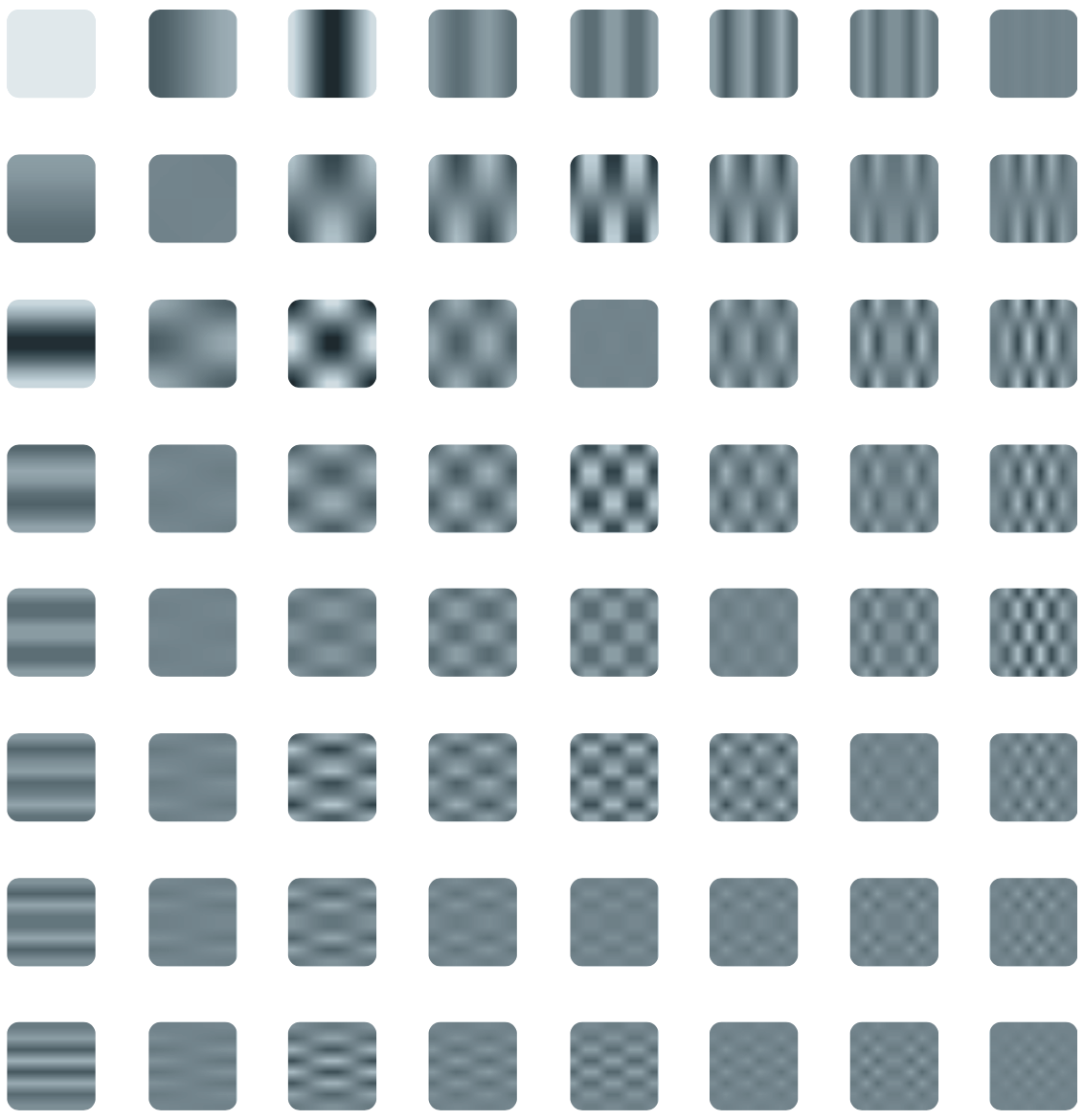
"Any 8-by-8 image, for example, can be built from some combination of the 64 building blocks [above]. A compression algorithm can then remove high-frequency information, which corresponds to small details, without drastically changing how the image looks to the human eye. This is how JPEGs compress complex images into much smaller amounts of data. In the 1960s, the mathematicians James Cooley and John Tukey came up with an algorithm that could perform a Fourier transform much more quickly - aptly called the fast Fourier transform."
"Since then, the Fourier transform has been implemented practically every time there is a signal to process. "It's now a part of everyday life," Greengard said. I've said this before, but this would've been useful for me in college. The two-hour lectures on Fourier transforms, after lunch and in the dark, were brutal and I might've missed a slide or twenty."
Any 8-by-8 image can be constructed from 64 basic building blocks. Compression algorithms remove high-frequency components corresponding to small details, preserving perceived image quality while reducing data size; JPEG exploits this principle to compress complex images. In the 1960s James Cooley and John Tukey developed the fast Fourier transform, an algorithm that computes Fourier transforms much more quickly. Since that innovation, Fourier transforms have been implemented wherever signals require processing. The Fourier transform and its fast algorithm underpin many modern technologies and everyday signal-processing tasks. They enable compression, analysis, and filtering across audio, image, and scientific domains.
Read at FlowingData
Unable to calculate read time
Collection
[
|
...
]